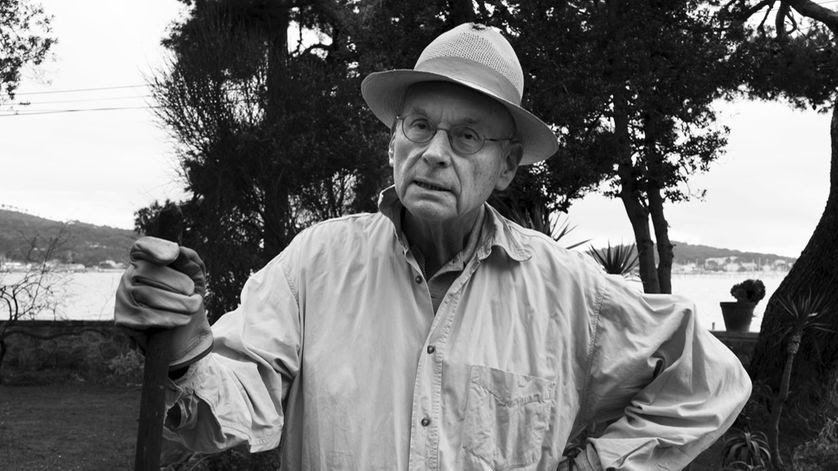Un zeste de pierre blanche pour chasser les humeurs noires / A zest of white stone to dispel black moods

Alors je voudrais vous raconter une courte histoire folle, une histoire d’une découverte sérendipiteuse puisque j’ai été amené à côtoyer cette découverte. À Toulon, avant la Seconde guerre mondiale, il y avait le docteur Despinoy, psychiatre, mais qui faisait un troisième cycle de neurophysiologie. Comme il était marin, il est envoyé en Afrique et là il assiste à une transe africaine où le sorcier calme la transe en faisant lécher une pierre blanche. Comme il faisait un troisième cycle de neurophysiologie, il en conclut aussitôt qu’il y a sur la pierre blanche une substance qui calme l’agitation puisqu’en effet l’homme en transe s’était calmé. Il rapporte la pierre au laboratoire de la marine à Toulon, qui lui répond : "Sodium, ça peut pas être ça, potassium, ça peut pas être ça, calcium, ça peut pas être ça, traces de lithium, ça peut être que ça !". Et il extrait le lithium et il en fait des boules et à ce moment-là Mogens Schou, un jeune universitaire danois le contacte en lui disant : "Je voudrais donner du lithium à quelqu’un de ma famille qui souffre d’une psychose bipolaire". Donc, on lui donne du lithium, et on constate que, effectivement, elle va beaucoup mieux. J’ai la publication qui montre que son témoignage, le témoignage de deux infirmiers, un cousin, une tante, confirme qu’elle va mieux et c’est publié dans une revue de l’époque. Et puis Mogens Schou donne à des cobés, qu’on appelle aussi cobayes, des boulettes de lithium, et effectivement ces petits rongeurs se calment parce qu’on a remarqué que on court beaucoup moins vite quand on a une encéphalopathie toxique. Et puis comme c’est toxique ça ne peut pas être commercialisé, la guerre arrive, et Mogens Schou reprend cette hypothèse et là, le spectrophotomètre à flamme apparaît et on sait doser les doses toxiques de lithium et on arrive à donner juste les doses thérapeutiques. Dufour qui était universitaire à Marseille avec Pringuey, son élève et mon élève, m’invitent à participer à l’observation. Sur un millier de patients qui avaient pris du lithium, résultat, plus de quatre-vingt pour cent de stabilisation de l’humeur stupéfiante. Conclusion, s’il y avait eu un seul scientifique avec nous, bien évidemment ça n’aurait pas marché parce que l’hypothèse était délirante, la méthode était ridicule et les résultats sont extraordinaires. Alors je pense que, bien sûr, il faut respecter la formation scientifique traditionnelle, mais il faut de temps en temps laisser un brin de folie pour arriver à des résultats incroyables comme celui-là. Maintenant, Despinoy a fini sa vie comme psychanalyste ayant totalement abandonné la psychophysiologie, Dufour a mal évolué, Pringuey a fait une belle carrière universitaire et plus de quatre-vingt pour cent des patients bénéficient d’une découverte sérendipiteuse.
So I would like to tell you a short crazy story, a story of a serendipitous discovery since I have come to know this discovery. In Toulon, before the Second World War, there was Dr. Despinoy, a psychiatrist, who was doing a third cycle of neurophysiology. As he was a sailor, he was sent to Africa and there he witnessed an African trance where the wizard calmed the trance by licking a white stone. As he was doing a third cycle of neurophysiology, he immediately concluded that there was a substance on the white stone that calmed the agitation because the man in a trance had calmed down. He brings the stone back to the marine laboratory in Toulon, which answers him: "Sodium, it can't be that, potassium, it can't be that, calcium, it can't be that, traces of lithium, it can only be that! And he extracts lithium and makes balls of it and at that moment Mogens Schou, a young Danish university student, contacts him and says: "I would like to give lithium to someone in my family who suffers from bipolar psychosis". So we give her lithium, and we see that she is indeed much better. I have the publication that shows that her testimony, the testimony of two nurses, a cousin, an aunt, confirms that she is doing better and it is published in a magazine of the time. And then Mogens Schou gives lithium pellets to cobes, also called guinea pigs, and indeed these small rodents calm down because we have noticed that we run much slower when we have toxic encephalopathy. And then as it is toxic it cannot be commercialized, war arrives, and Mogens Schou takes up this hypothesis and there, the flame spectrophotometer appears and we know how to measure the toxic doses of lithium and we manage to give just the therapeutic doses. Dufour, who was a university student in Marseille with Pringuey, his student and my student, invite me to participate in the observation. Out of a thousand patients who had taken lithium, result, more than eighty percent stabilized amazing mood. Conclusion, if there had been only one scientist with us, obviously it would not have worked because the hypothesis was delusional, the method was ridiculous and the results are extraordinary. So I think, of course, you have to respect traditional scientific training, but you have to leave a bit of madness from time to time to achieve incredible results like that. Now, Despinoy has ended his life as a psychoanalyst having totally abandoned psychophysiology, Dufour has evolved badly, Pringuey has had a great university career and more than eighty percent of patients benefit from a serendipitous discovery.
Translated with www.DeepL.com/Translator